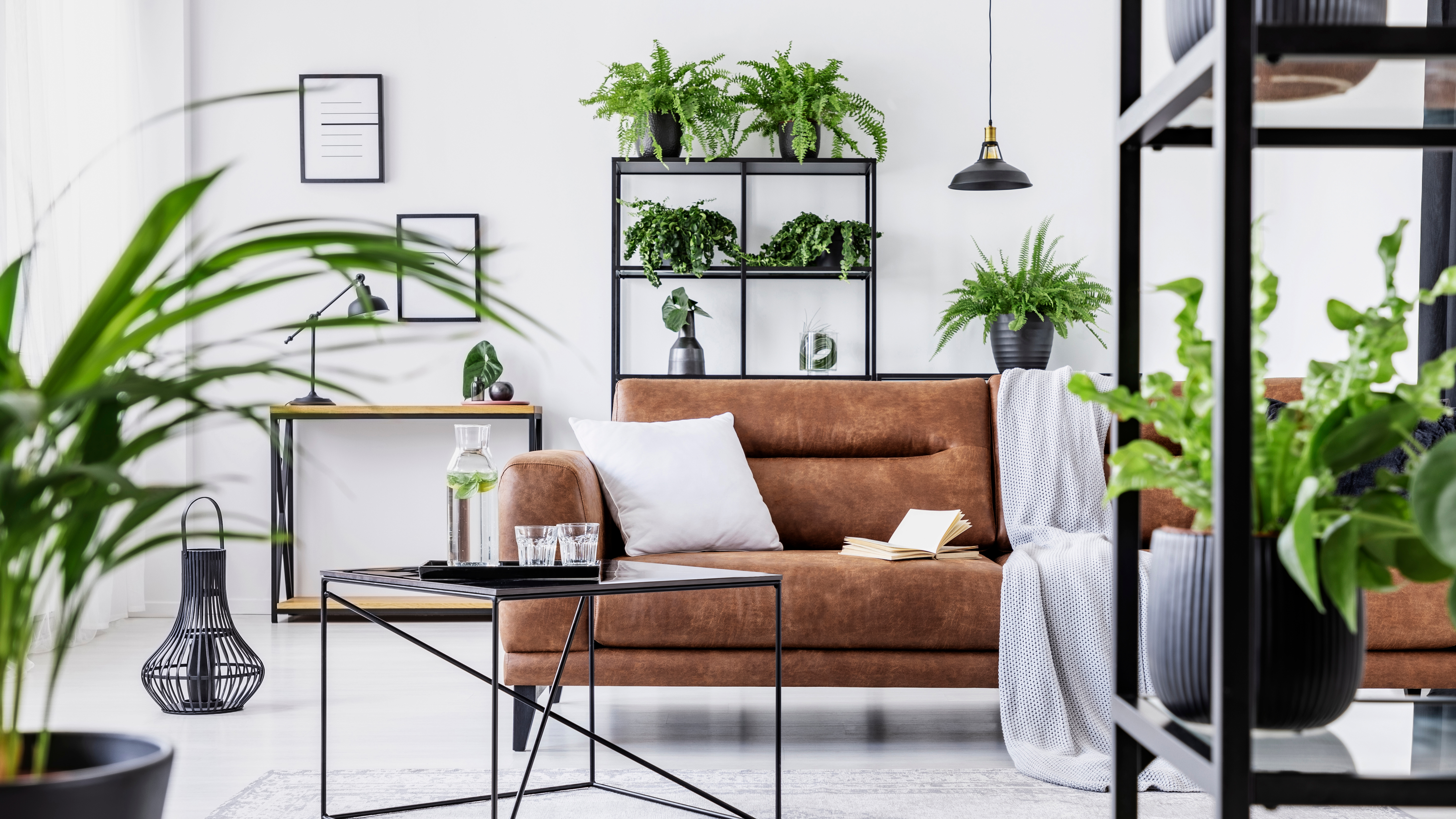
You don’t need a yard to enjoy nature’s mood-boosting benefits. Caring for indoor houseplants can provide us with the joy of watching new shoots grow while gaining from the positive psychological and physiological benefits that houseplants bring.
It seems we could all do with a bit of nature indoors when you realize how much time we spend inside. According to a review published by the International Journal of Built Environment & Sustainability into the benefits of indoor plants, we spend approximately 87% of our time inside. Studies have also found that it takes less than 20 minutes for plants to make us feel more at peace.
Plants make all the difference, says Lisa Eldred Steinkopf, The Houseplant Guru, “It’s especially true if you don’t have an outdoor area to escape to. Indoor greenery brings nature indoors. Even if you only have one plant, it will help.”
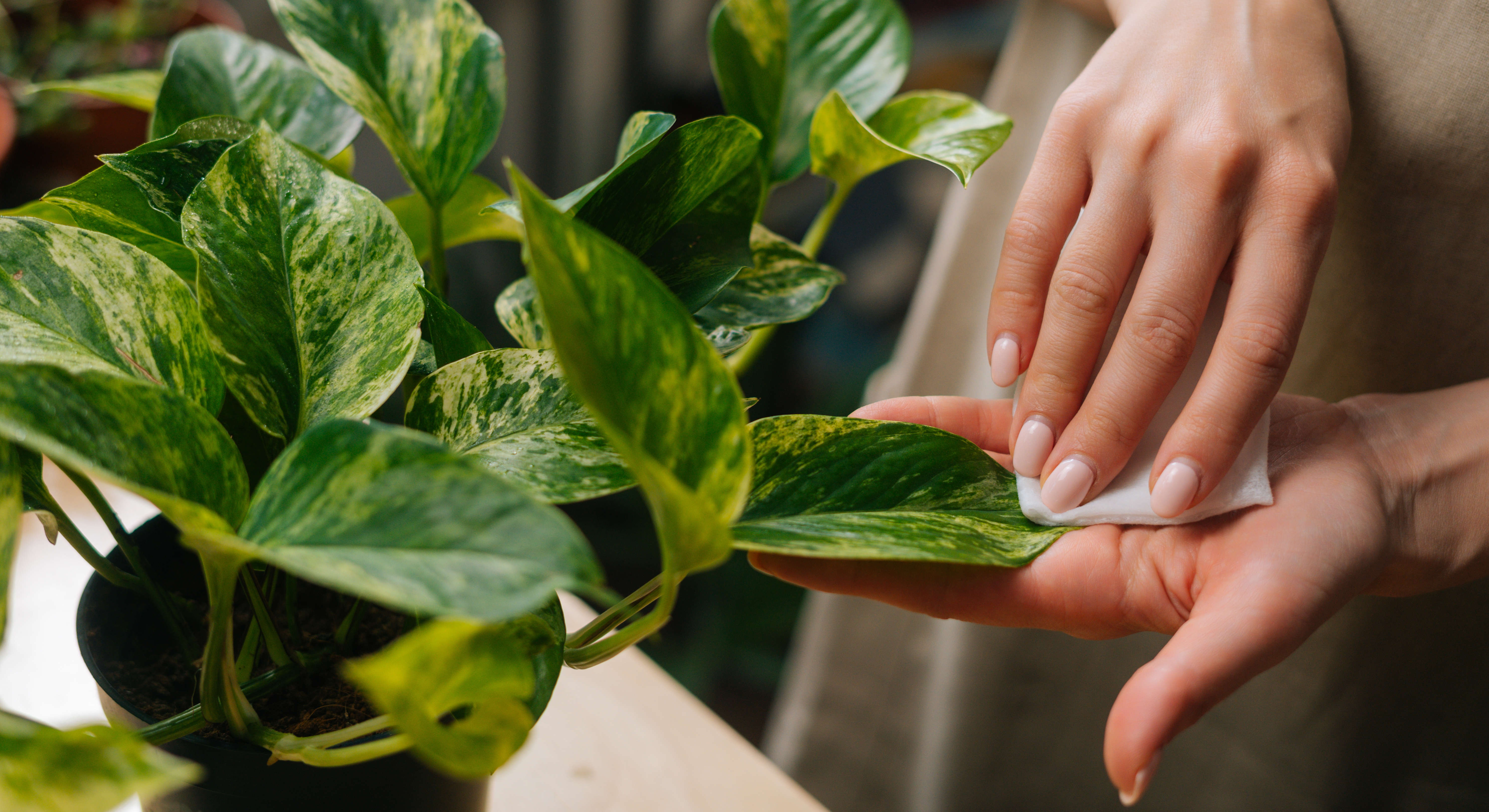
As an interior expert, Sarah Noyce, owner of the homeware store Salt and Steel, appreciates the beautiful aesthetic that houseplants bring to a home. Still, she also understands how they can boost mood. “Houseplants have the remarkable ability to elevate mood, reduce stress, and improve overall well-being. Houseplants can work wonders for your mental health, and I can’t get enough in my home.
“Interacting with plants can significantly reduce your stress levels. Whether watering, repotting or simply admiring their growth, caring for houseplants provides a therapeutic outlet for stress relief. The rhythmic process of nurturing plants can help calm the mind and promote mindfulness, allowing us to momentarily escape the chaos of daily life,” she adds.
Eldred Steinkopf agrees: “Faux plants seem to be having a day, but I don’t find that they have the same effect as real plants. Real plants need care such as watering, cleaning, and fertilizing. They depend on you to live, and people name them.”
It appears that it’s not just the plants that boost our mood; the nurturing we give them does us good, too.
How do you know which houseplants are best? “All plants boost your mood to an extent,” says Eldred Steinkopf, “but if you have flowering houseplants, it makes it even better, and scented ones are better still.”
So, if you're looking for houseplants to boost your mood, we’ve recommended 5 indoor plants that will improve your mental health and add a beautiful aesthetic to your home.
1. Phalaenopsis orchid
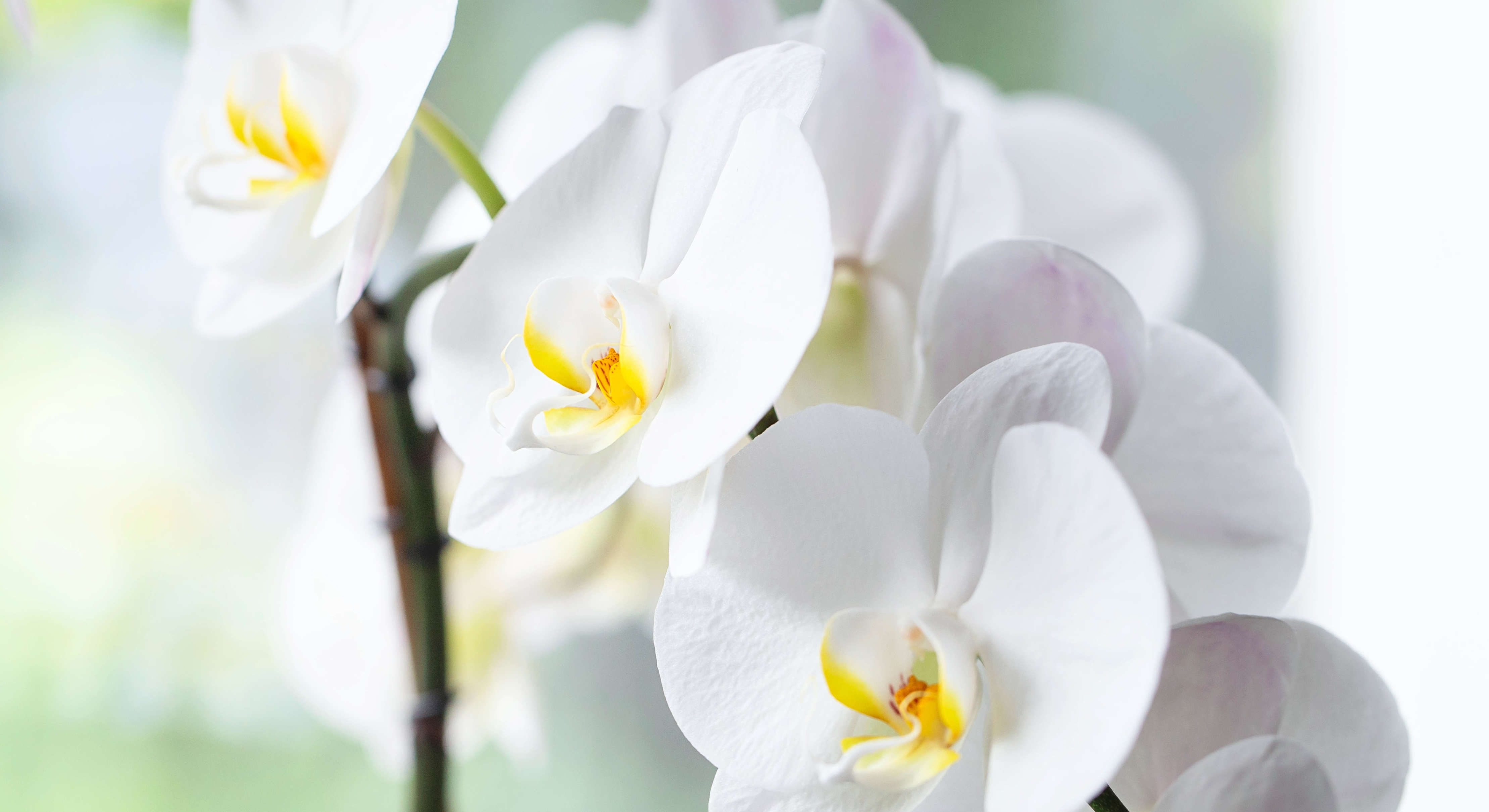
The delightful, sweetly fragrant Phalaenopsis Orchid, commonly known as the “moth orchid”, is recommended by Eldred Steinkopf. “It’s easy to find, and it can remain in flower for months,” she says. It can flower for up to six months before the petals drop.
Phalaenopsis orchids thrive in light shade and are best on east or west-facing window sills. It also enjoys a warm climate, making it ideal as a houseplant, preferring a daytime temperature of 70°F to 80°F. The orchid also prefers a high humidity.
Keep the orchid moist, watering twice weekly during warmer, dryer weather. If the plant is too dry, the leaves will wilt, and the tips will turn yellow. However, be cautious not to overwater as this can cause the roots to rot, preventing the plant from absorbing water. You could add an orchid food to give your plant extra nutrients, such as Miracle-Gro’s Water Soluble Orchid Food ($7, Amazon).
According to the American Orchid Society, orchids are potted differently from other houseplants. They do not grow in soil and prefer a potting material like bark chips or tree fern that allows their roots to stay well-aerated.
Other flowering houseplants to try at home
Eldred Steinkopf also recommends Amaryliis, the Crown of Thorns, African violets and Tillandsias.
2. Hoya
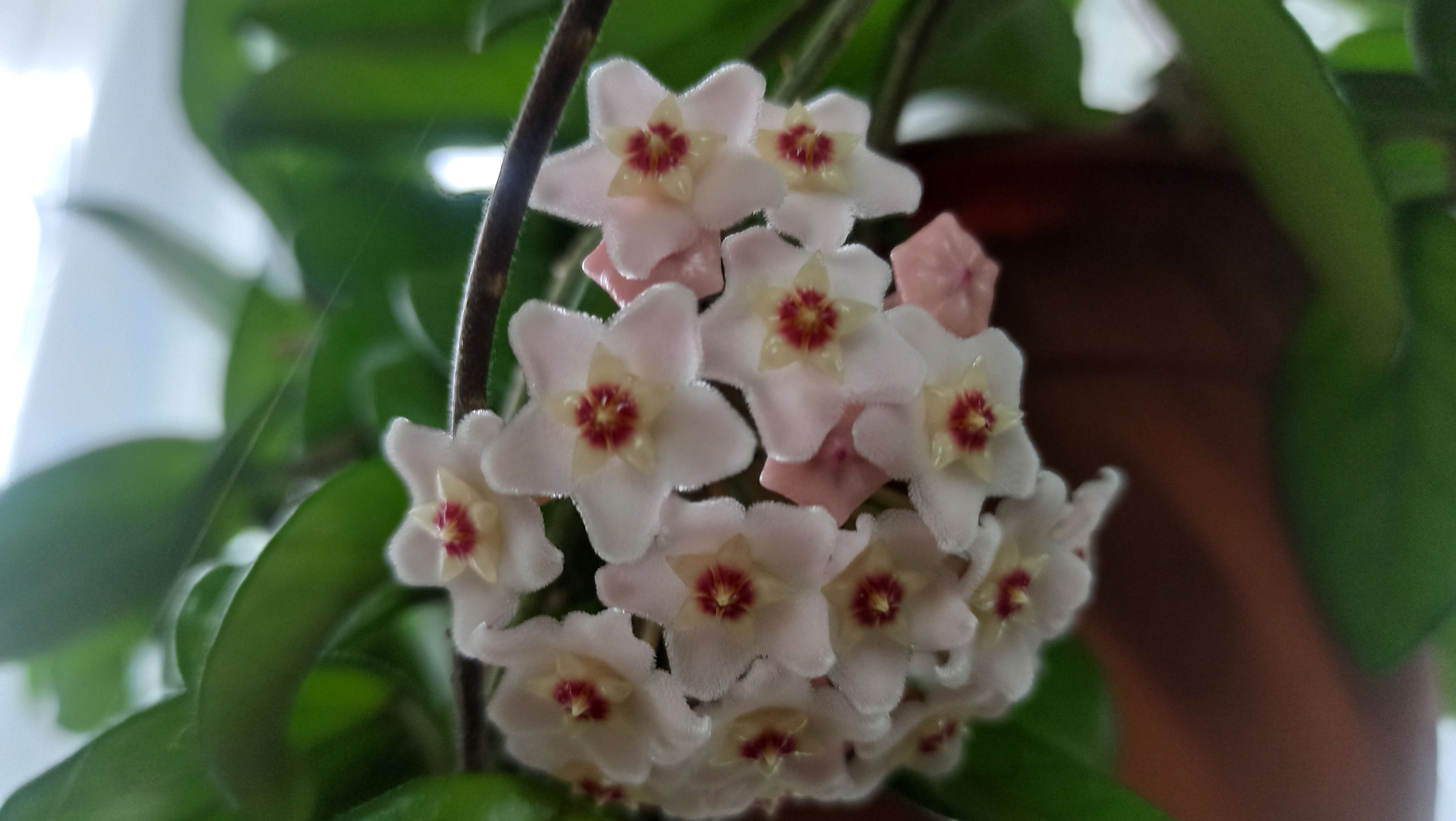
The Hoya plant is commonly known as the “wax plant” and is popular for its fragrant blooms and unique foliage. Hoyas are native to subtropical and tropical regions and grow under the shaded canopy of trees in their natural environment. They have a trailing or creepy nature and are well-suited positioned on shelves where the glossy leaves can cascade.
Hoya’s have beautiful blooms, but Pistils Nursery says it can be hard to predict when they will flower, as it happens when the plant reaches maturity. However, it suggests keeping the tightly root-bound in a pot smaller than normal will accelerate blossoming.
The beauty of the plant is its large range of foliage shapes and textures, ranging from elongated, deeply-veined leaves to those that are thin and narrow. Hoya Kerrii has spade-like leaves resembling hearts, while Hoya Pubicalyx’s variegated leaves are oval with tinges of silver, and Hoya Linearis is altogether different with thin, needle-shaped leaves.
The Canopy Plant Co says they prefer to dry out between watering due to their semi-succulent nature, although some will need more water than others. They thrive in warm temperatures between 60°F-90°F and are well suited as indoor houseplants, where they favor bright but indirect sunlight.
3. Peace Lily
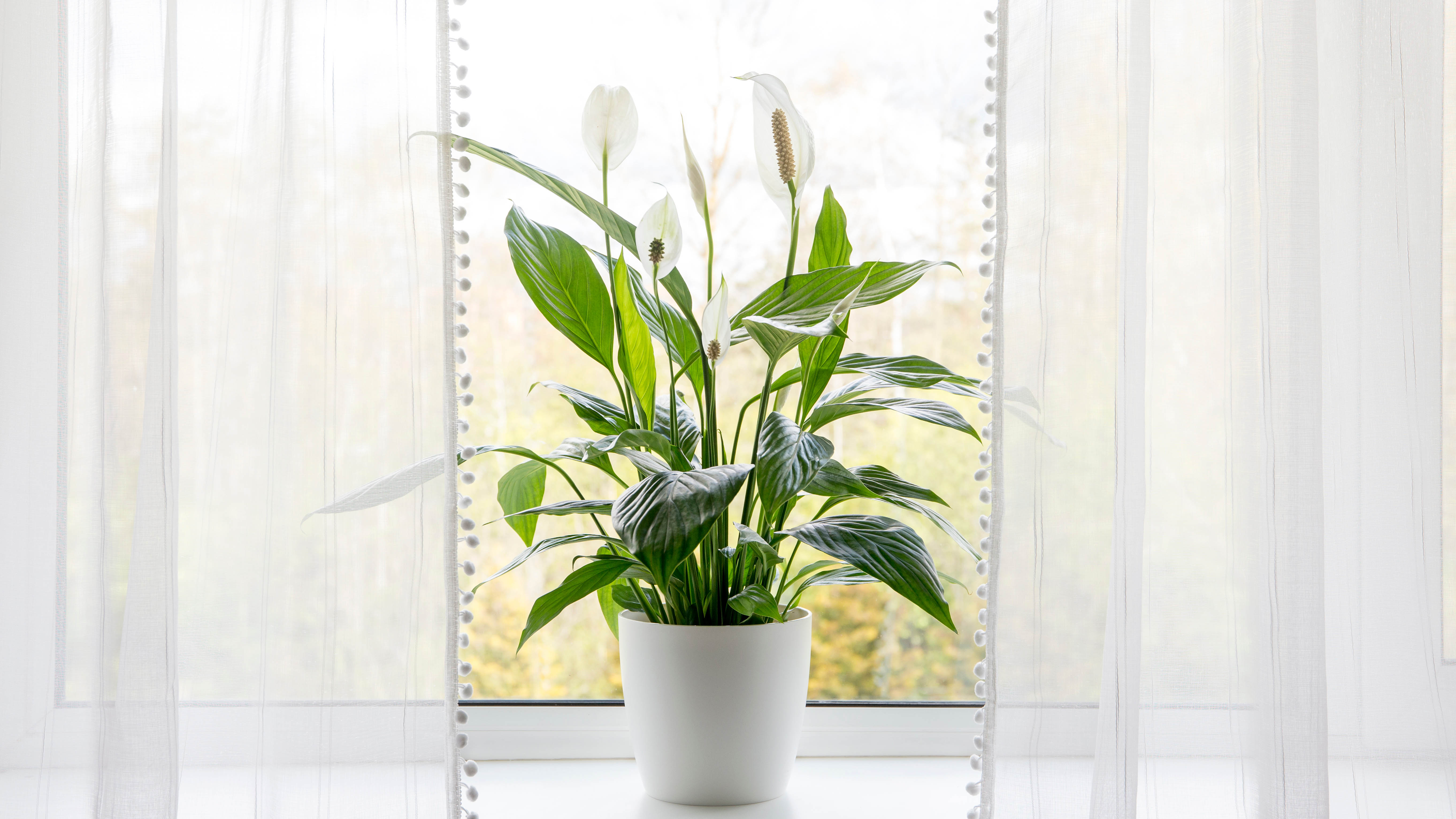
Peace Lilies make excellent houseplants and are known for purifying the air and absorbing pollutants. They are also easy to maintain and have show-stopping leaf bracts, often mistaken for flowers.
The Peace Lily favors low light or light partial shade. If placed in direct sunlight, the leaves will scorch. However, they tends to produce more flowers when placed in brighter light. A Peace Lily prefers moist rather than wet soil and should be watered when needed. Check the top of the soil weekly to see if it has dried out before watering.
According to Feng Shui, the Peace Lily is the ideal bedroom companion as it brings positive energy to the room and has a surreal, instantly calming beauty.
4. Snake plant
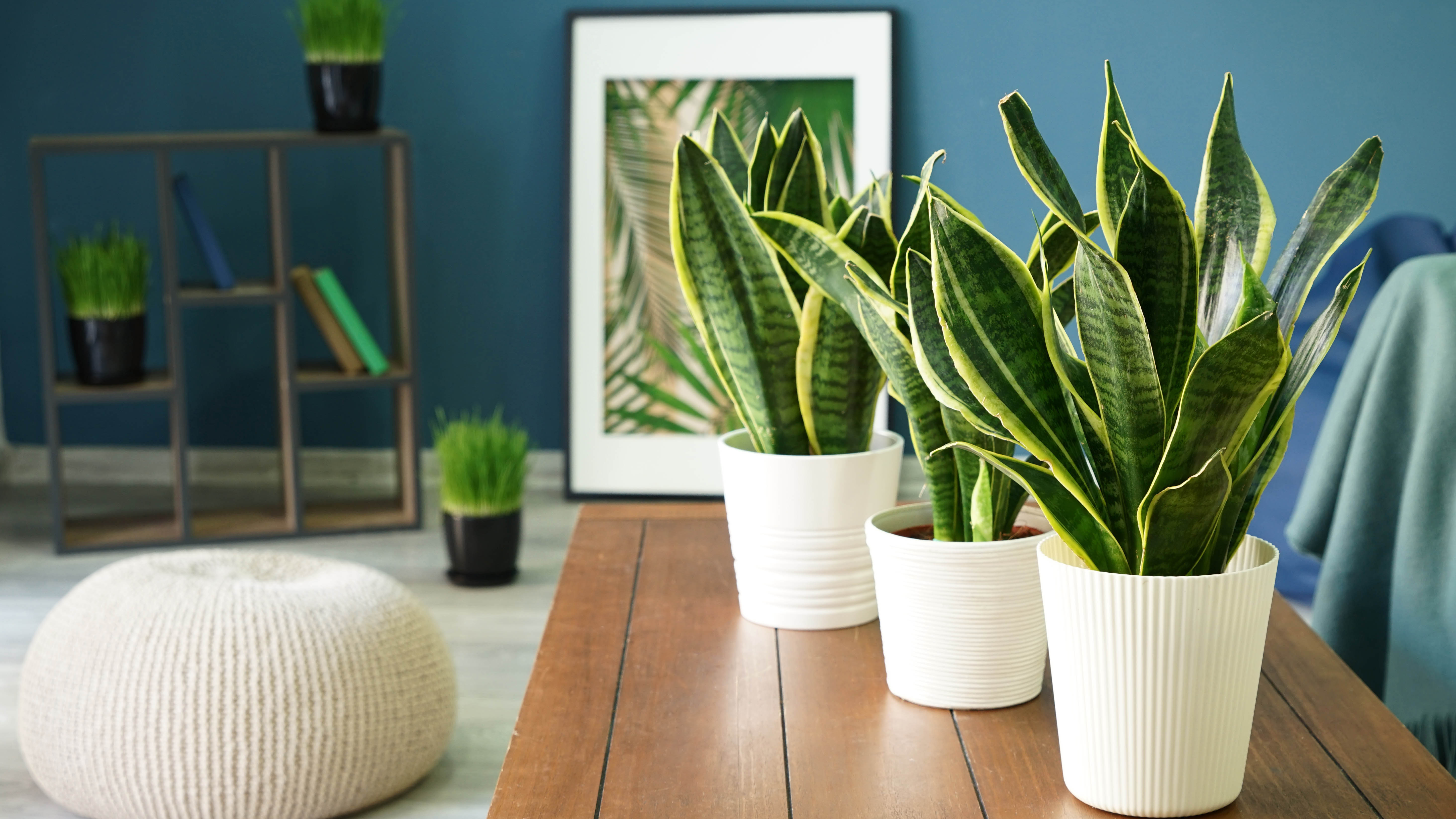
The most common snake plant, Sansevieria trifasciata, is also known as “mother-in-law’s tongue”, but don’t let that put you off. It’s a hardy low maintenance houseplant with striking swordlike leaves available with green or striped leaves with a yellow border.
It’s the perfect companion if you’re new to houseplants, as it’s drought tolerant, requires minimal watering (once every two weeks), and can survive with low light levels, making it ideal for bathrooms. It’s happy to be left unattended for a couple of weeks.
In addition to boosting your overall mood and reducing stress and anxiety, snake plants also improve air quality. They are known for removing excess moisture and harmful airborne chemicals in the air. Snake plants can help reduce mold in your home and are one of a few plants that continue to produce oxygen in low-light conditions.
5. Pothos
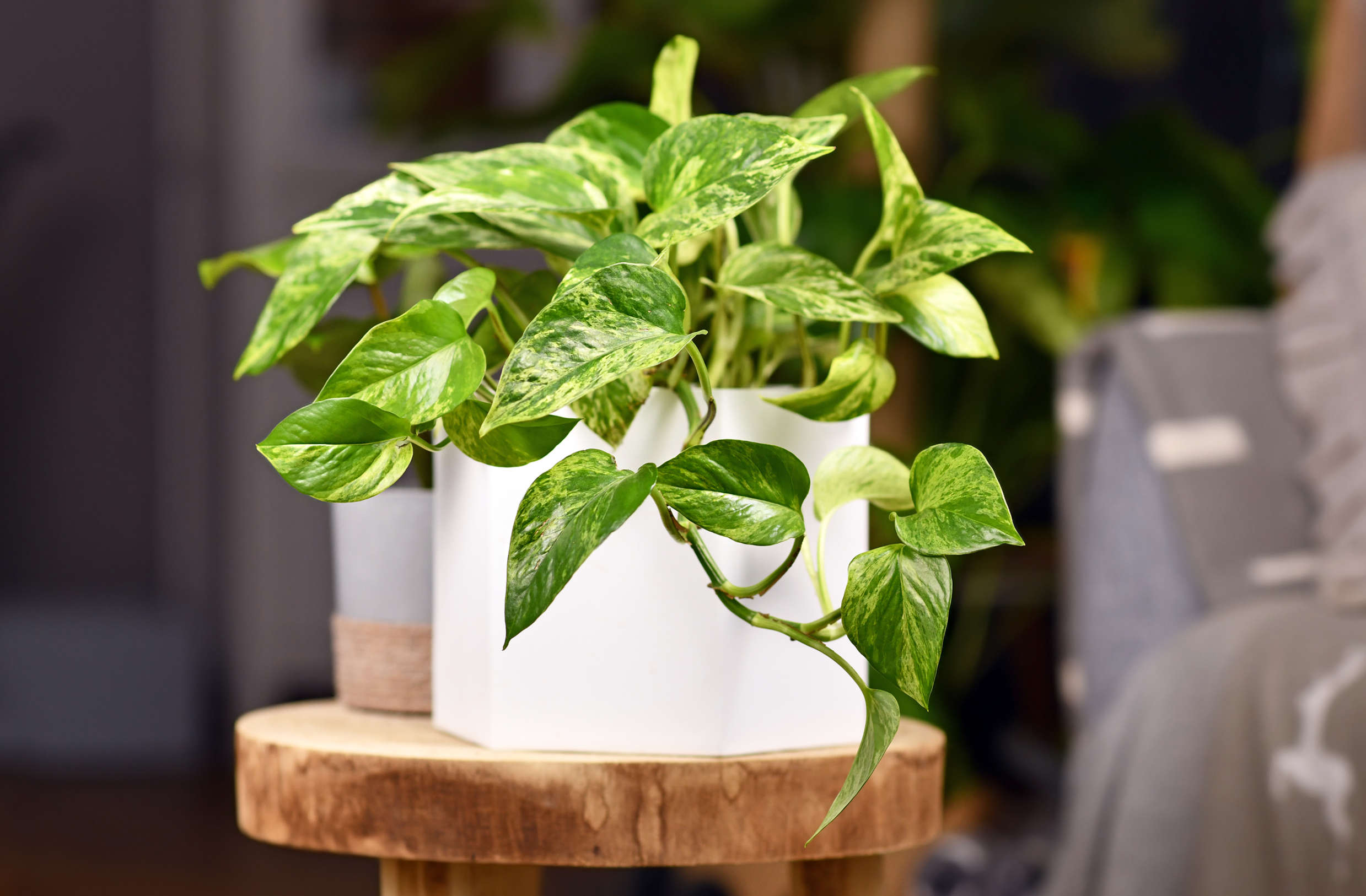
Pothos is a living, breathing stress reliever and a good all-round indoor plant. They have beautiful trailing vines and grow long, leggy branches, making pothos perfect for placing on high shelves or hanging in plant baskets.
The decorative leaves come in many varieties, including heart-shaped leaves, golden in color or dappled white and green.
They are also easy to care for, and with minimal attention, they will survive well in light to medium shade, although avoid direct sunlight, as the leaves will turn brown and die. They do best in consistently moist soil but don’t enjoy sitting in soggy soil. They are also easy to propagate — I’ve successfully grown new plants from cuttings placed in a vase of water.






